Sunrise over the surface of the moon: a series of star tracker images taken by LADEE Saturday, April 12. The lunar horizon is ahead, a few minutes before orbital sunrise. Image Credit: NASA Ames.
[/caption]
NASA’s Lunar Atmosphere and Dust Environment Explorer (LADEE) literally ‘saw the light’ just days before crashing into the lunar farside last Thursday April 17. Skimming just a few kilometers above the moon’s surface, mission controllers took advantage of this unique low angle to gaze out over the moon’s horizon in complete darkness much like the Apollo astronauts did from lunar orbit more than 40 years ago.
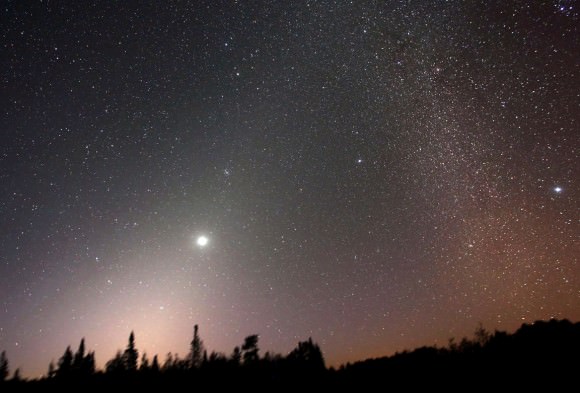
With the glow of Earth well-hidden, any dust in the moon’s scant atmosphere around the time of orbital sunrise should become visible. Scientists also expected to see the softly luminous glow of the zodiacal light, an extensive cloud of comet and asteroid dust concentrated in the flat plane of the solar system. The zodiacal light gets its name from the zodiac, that familiar band of constellations the planets pass through as they orbit the sun. Back on Earth, the zodiacal light looks like a big thumb of light standing up from the western horizon a couple hours after sunset in spring and before sunrise in fall.
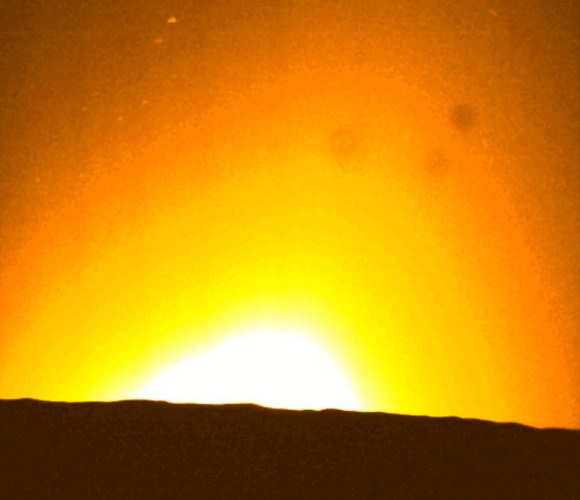
So what did LADEE see? As you watch the animation above, comprised of images taken from darkness until sunrise, you’ll see a yellow haze on the horizon that expands into large diffuse glow tilted slightly to the right. This is the zodiacal light along with a smaller measure of light coming from sun’s outer atmosphere or corona. Together they’re referred to as CZL or ‘coronal and zodiacal light’. At the very end, the sun peaks over the lunar horizon.
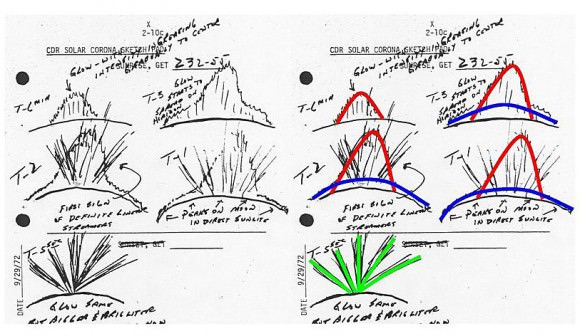
What appears to be missing from the pictures are the mysterious rays seen by some of the Apollo astronauts. The rays, neatly sketched by astronaut Eugene Cernan of Apollo 17, look a lot like those beams of light and shadow streaming though holes in clouds called crepuscular rays.
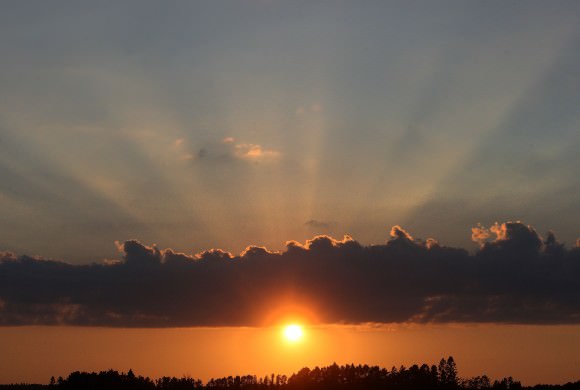
Only thing is, Earth’s atmosphere is thick enough for cloud beams. The dust in the moon’s atmosphere appears much too thin to cause the same phenomenon. And yet the astronauts saw rays as if sunlight streamed between mountain peaks and scattered off the dust just like home.
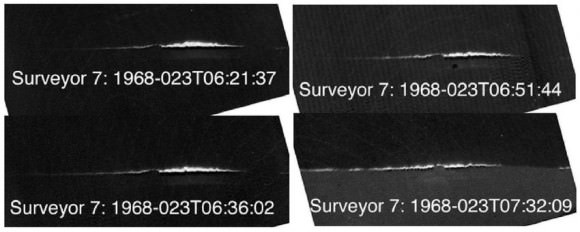
It’s believed that dust gets lofted into the spare lunar atmosphere via electricity. Ultraviolet light from the sun knocks electrons from atoms in moon dust, giving them a positive charge. Since like charges repel, bits of dust push away from one another and move in the direction of least resistance: up. The smaller the dust particle, the higher it rises until dropping back down to the surface. Perhaps these “fountains” of lunar dust illuminated by the sun are what the astronauts recorded.
Unlike Cernan, LADEE saw only the expected coronal and zodiacal light but no rays. Scientists plan to look more closely at several sequences of images made of lunar sunrise in hopes of finding them.


what a great mission LADEE accomplished. Since the lunar dust reacts to the electrical environment, perhaps the phenomena occurs at certain times when the Moon is swept by the Earth’s magnetosphere or the heliosphere.